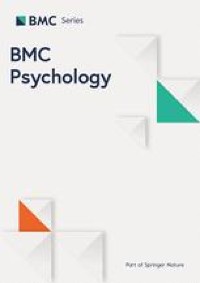
This project includes two studies with two different methodological designs: a cross-sectional design (study 1) and a longitudinal design (study 2).
Participants
Study 1
The sample was determined according to the universe of male (N = 11,507) and female individuals (N = 901) in prison, and male (N = 2632) and female (N = 196) individuals on conditional release and the following criteria: significance (i.e., the number of sample’s effective) and representativeness (i.e., sample’s quality guaranteed by the sampling method). Sample significance was calculated using the Krejcie and Morgan (1970) formula. Thus, a minimum of 375 male and 269 female participants in prison and 338 male and 132 female participants on conditional release will be recruited.
Study 2
As a longitudinal study, it will be based on a convenience sample of individuals in prison and in conditional release. We expect to recruit a minimum of 100 men and 80 women in prison and 60 men and 40 women in conditional release. A priori power calculations revealed that the sample size is adequate to conduct the analyses (effect size = 0.30, power = 0.95, number of latent variables = 1, number of observed variables = 5, N = 100) [16].
Procedures
After obtaining approval from the Host Institution’s Ethics Committee, authorization to recruit and assess male and female individuals who are in prison and conditional release (studies 1 and 2) will be obtained from the General Directorate of Reintegration and Prison Services–Ministry of Justice (DGRSP-MJ). Then, different national Prisons and Social Reintegration Teams (from the North to the South of the country) will be contacted to define the data collection procedures for studies 1 and 2.
All the individuals will sign an informed consent in which the main objectives of the research, the voluntary and anonymous nature of their participation, and the fact that no risks or benefits (e.g., financial, legal, or others) are expected from participating will be explained. Data will be collected in a paper-and-pencil format (i.e., presential).
Study 1
Study 1 uses a cross-sectional design of male and female individuals in prisons and conditional release. Inclusion criteria included adult male and female individuals in prison and on conditional release of Portuguese nationality and older than 18 years. Since this study aims to assess different samples at different moments of the prison sentence, five matched groups of male and female individuals convicted of prison will be assessed: a group of individuals at the beginning of the prison sentence (1–2 weeks at a maximum); a group of individuals six months after the beginning of the prison sentence; a group of individuals at the end of the prison sentence; a group of individuals 1–2 weeks after the prison release; and a group of individuals one year after prison release. To ensure the sample’s representativeness, information about individuals older than 18, distributed by sex and age from the different national Prisons and Social Reintegration Teams, will be requested from the DGRSP-MJ. Participants will be selected randomly.
Study 2
Study 2 uses a longitudinal design in a subsample of adult male and female individuals in prisons and conditional release. Inclusion criteria include (a) adult male and female individuals (i.e., 18 years or more); and (b) individuals who recently entered prison (1–2 weeks in maximum) and individuals who were recently released from prison (1–2 weeks in maximum).
Male and female individuals who participated in study 1 and who were integrated into the group of individuals at the beginning of the prison sentence (1–2 weeks at a maximum) and into the group of individuals 1–2 weeks (at a maximum) after the prison release will be invited to participate in the longitudinal study. Confidentiality of data will be guaranteed. However, an alphanumeric code will be attributed to each participant and maintained until the last data collection moment (12 months) to match the participants and anonymize the participation. At the end of the data collection, all the codes will be deleted, and no personal information will be maintained.
As it will be a longitudinal study, after the baseline assessment, individuals will be followed and assessed at routine intervals of three months for one year – three months, six months, nine months, and one year.
Measures
Sociodemographic and Juridical-Penal Questionnaire will be used to collect data on sociodemographic (e.g., age, sex, marital status, educational level, socioeconomic level, etc.) and juridical-penal variables (e.g., sentence length, crime committed, recidivism, etc.).
Adverse Childhood Experiences Scale (ACEs) [17, 18] is a brief self-report measure with ten items for assessing ten types of childhood adversities: physical, verbal, and sexual abuse, physical and emotional neglect, exposure to domestic violence, alcoholic parent, a family member in jail, a family member with a mental disorder, and parents’ divorce.
Benevolent Childhood Experiences Scale (BCEs) [19, 20] is a 10-item self-report tool for assessing supportive and positive experiences from birth to 18 years of age.
Alcohol, Smoking, and Substance Involvement Screening Test (ASSIST) [21, 22] is a screening tool for assessing the risk level for alcohol, smoking, and other substance abuse and dependence and the main consequences of alcohol, smoking, and other substance abuse.
Prison Environment Inventory (PEI) [12, 23] is a 48-items self-report tool for assessing the prisoner’s perception of the prison environment, including eight dimensions: privacy, safety, structure, support, emotional feedback, social stimulation, activity, and freedom.
Depression, Anxiety, and Stress Scales − 21 (DASS-21) [24, 25] is a 21-items self-report measure for assessing depression, anxiety, and stress symptoms. Higher scores indicate more severe symptomatology.
Posttraumatic Stress Disorder Checklist for DSM-5 (PCL-5) [26, 27] is a self-report measure with 20 items that allow it to assess the 20 DSM-5 PTSD symptoms. Higher scores indicate more severe symptomatology.
Suicide Behaviours Questionnaire-Revised (SBQ-R) [28, 29] is a very brief screening of suicidal behaviours, with higher scores indicating more frequent suicidal behaviours and greater suicide risk.
Difficulties in Emotion Regulation Scale-Short Form (DERS-SF) [30, 31] is a 18-items self-report assessment tool that assesses six dimensions of difficulties in emotion regulation: awareness; clarity; goals; impulse; non-acceptance; and strategies. Greater scores indicate more severe difficulties in the emotion regulation process and strategies.
Buss-Perry Aggression Questionnaire – Short Form (BPAQ-SF) [32, 33] is a very brief self-report instrument with 12 items for assessing aggression through four main dimensions: physical aggression, verbal aggression, anger, and hostility. Higher scores suggest greater levels of aggressiveness.
Satisfaction with Life Scale (SWLS) [34, 35] is a brief measure with five items developed for assessing global and overall satisfaction with one’s life. Greater scores describe a greater perception of satisfaction with life.
Social Support Satisfaction Scale (ESSS) [36] is a 15-items measure for assessing satisfaction with social support, including with family, friends, and community. Higher scores on the scale indicate greater satisfaction with social support.
Brief Resilience Scale (BRS) [37] is a brief self-report tool with six items for assessing resilience and recovering from stress. Higher scores suggest a greater ability to recover from stress and be resilient.
Delinquency Questionnaire (D-CRIM) [38] is a 12-items self-report measure to assess criminal behaviours (violent and non-violent) that occurred in the last 12 months or lifetime.
Social Network Index (SNI) [39] is an assessment tool for measuring the degree of participation of an individual in 12 different types of social relationships and networks (e.g., intimate partner, parents, children, family members, neighbours, friends, and workmates).
Individual files of participants will also be examined to extract information related to criminological variables (e.g., length of the sentence), institutional misconduct (e.g., number of infractions), mental health services use, medication, and number of visits in prison.
Information regarding the different prisons will be collected, such as prison size, security level, and overcrowding.
Data analysis
Study 1
Descriptive statistics using the IBM SPSS version 28.0 will be conducted to characterize the sample and the main variables. Univariate, bivariate, and multivariate analysis will be conducted, along with mediation and moderation analysis using PROCESS macro 4.2 for IBM SPSS software.
Study 2
Mixed-effects models will be performed using IBM SPSS version 28.0, combining two levels to a single framework, with Level 1 for repeated measurements nested within Level 2. Longitudinal Structural Equation Modelling will also be used to examine causal inferences through moderation and mediation effects using AMOS IBM SPSS.
This post was originally published on this site be sure to check out more of their content.






